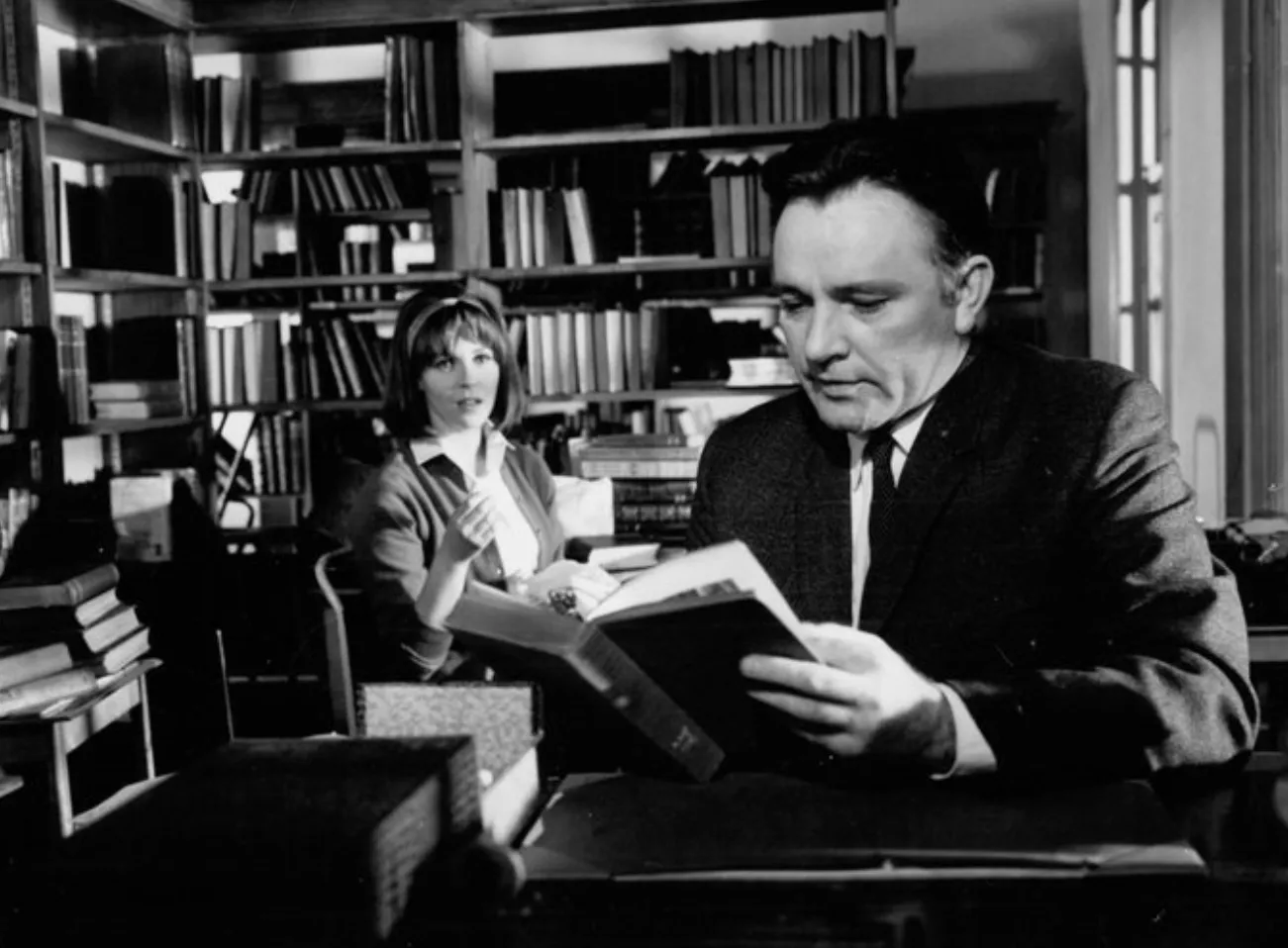Inside Jobs and Double-Crosses: A Celebration of Deliciously Dark Double Agents in Spy Fiction
In the shadowy realm of espionage fiction, the most intriguing characters are often those who exist in the murky gray area between loyalty and betrayal.
Joseph Conrad's seminal works, The Secret Agent (1907) and Under Western Eyes (1911), introduced the enigmatic double agent - a spy who feigns allegiance to one side while secretly serving another.
Conrad's masterful exploration of the twisted psyches of Verloc and Razumov, two of the most duplicitous characters in spy literature, left an indelible mark on the genre.
.webp)
Terrorism, anarchy, and the rise of the double agent
Almost two centuries after American author James Fenimore Cooper introduced his revolutionary novel The Spy (1821), Anglo-Polish writer Joseph Conrad re-shaped the espionage genre with his vision of terrorism and anarchy.
Chillingly, in Conrad’s spy books, the danger was now coming from within - a theme echoed in G.K. Chesterton’s The Man Who Was Thursday (1908), a book rooted in anarchism, double-crossing, and secret identities.
By the time John Buchan published The Thirty-Nine Steps (1915) and his Richard Hannay series, the innocent-man-on-the-run premise helped blur the lines between ‘friend’ and ‘unknown enemy’. Academic Douglas Kerr argues that Buchan’s series wasn’t just influenced by Conrad, but that Buchan lifted Conrad’s plot from Victory for Buchan's fifth Hannay novel, The Island of Sheep (1936).
"The brand new social experience where you activate your gaming skills as you train like a spy."
- TimeOut
Take on thrilling, high-energy espionage challenges across different game zones.

%20(1).webp)
Ashenden, Somerset Maugham, and the ‘realistic’ spy
Somerset Maugham shook up the genre once more in Ashenden (1928), a collection of loosely linked stories partially based on Maugham’s WWI service in British Intelligence. Maugham’s Ashenden brings a new level of complexity to espionage literature as one of the first ‘realistic’ spy novels. It reflects Maugham’s view that intelligence work is often tedious although compelling.
John Ashenden occupies the middle ground between Ian Fleming’s glamorous James Bond and John le Carre’s bland-yet-honorable George Smiley. Ashenden must use his skills of persuasion, bribery, and blackmail rather than brawn or gadgets to accomplish his goals. In The Traitor, for example, spymaster ‘R’ orders Ashenden to recruit an Anglo-German intelligence officer, Grantley Caypor, and his wife to work as double agents.
"How the devil do you expect me to persuade him to put his head in a noose?" Ashenden asks R.
"It won't be a noose,” R replies. “It'll be a firing squad."
"Caypor's clever," Ashenden retorts.
"Well, be cleverer," R advises.
%20(1).webp)
Graham Greene & the double agent
Both Eric Ambler and his British contemporary Graham Greene were reportedly influenced by Conrad as well as being deeply suspicious of the inner workings of powerful governments and large corporations. Greene's cynicism also likely sprung from his first-hand experience - after all, his former boss at Britain’s MI6 was Kim Philby, one of the most treacherous officers in British history.
Greene paints his double agents as nuanced, fallible humans sometimes caught in a trap of their own making. In The Human Factor (1978), Maurice Castle (played by Nicol Williamson in the series, is a British MI6 agent struggling to separate his public and private lives. Castle’s wife, Sarah, was formerly his agent and he now feels indebted to the communists who helped Sarah escape from South Africa.
Greene denied that the character of Castle was based on Philby although - much like his former MI6 spymaster - Castle realizes too late that being part of the 'big game', may involve working as a Soviet puppet.

Ian Fleming
Lt. Commander Ian Fleming worked out of British Naval Intelligence and in his first novel, Casino Royale (1953), he introduces us to Bond, an elite agent with a license to kill. A raft of memorable cat-stroking masterminds and quirky villains follow. (No, Mr. Bond, I expect you to die!). Yet one of Fleming’s most intriguing characters is a double agent.
Female vixen Vesper Lynd (reportedly based on secret agent Krystyna Skarbek) works for the fictional Russian Ministry of Internal Affairs. Blackmailed by the Soviets, Vesper has been ordered to lure Bond into a trap and realizes she will never control her own life again. Ultimately, the stress of life as a double agent leads her to ‘desperate measures’.
Bond and his peers also struggle with the uncertainty, forever wondering if they are the hero or the anti-hero of their life’s narrative, Matthew Woodcock notes in The Spectator: “Joseph Conrad had earlier delved into similar territory in his thriller The Secret Agent.”
Len Deighton
Like Conrad’s Heart of Darkness (1899), Len Deighton’s The Ipcress File begins in London, follows the trail of global power and manipulation, then returns to the capital where Harry Palmer (played by Michael Caine in the movie) investigates The Ipcress File. (You’ll need to read Deighton or watch The Impress File to discover more about the double agent at the heart of this thriller, otherwise we will spoil the surprise.)
Deighton also focuses heavily on the concept of the double agent in his three trilogies which begin with Berlin Game, Mexico Set, and London Match and end with Faith, Hope, and Charity. The story arc involves Bernard Samson's wife, Fiona and poses two main questions throughout: Which side does she work for? And is Bernard a double agent himself?

John le Carré
Le Carré’s groundbreaking The Spy Who Came in from the Cold (1963) revolves around Alec Leamas (played by Richard Burton) who is sent to East Germany disguised as a ‘defector’ to sow disinformation about an East German intelligence officer. The novel challenges our long-held perception of the double agent. Can traitors ever really be reduced to simply ‘good guys’ or ‘bad guys’?
“What do you think spies are: priests, saints, and martyrs?” Leaman blurts out in a bitter self-confession. “They’re a squalid procession of vain fools, traitors too, yes; pansies, sadists and drunkards, people who play cowboys and Indians to brighten their rotten lives.”
A decade later, le Carré introduces the concept of ‘the mole’ in his novel Tinker, Tailor, Soldier, Spy (1974) a term that describes a long-term sleeper agent who burrows into the fabric of society to undermine it from within. In this case, Smiley suspects Bill Haydon (also said to be modeled on Soviet traitor Kim Philby) who is part of the establishment - the ultimate insider with easy charm, social connections, and potentially ruthless intentions.
Viet Thanh Nguyen
It would be impossible to list all of the notable espionage books and authors to have come forward in the years after Conrad, not least of them American author Alan Furst who writes sophisticated fiction about the human condition. One author’s work, in particular, stands out, however.
Vietnamese-American professor Viet Thanh Nguyen’s Pulitzer-winning novel The Sympathizer (2015) explores the Vietnam War through the eyes of a Viet Cong spy, a double agent who moves to Los Angeles to embed himself in a South Vietnamese community in exile. The New York Times Book Review praised The Sympathizer for its treatment of dualities in a way that 'compares favorably' with masters like Joseph Conrad.
Viet Thanh Nguyen told The Writer magazine that he took inspiration from past authors to create his protagonist and the double agent's political leanings: “I wanted to tell a serious story and an entertaining story, and spy novels have a long tradition of being able to do both through authors like Joseph Conrad, Graham Greene, and John le Carré.
SPYSCAPE+

Join now to get True Spies episodes early and ad-free every week, plus subscriber-only Debriefs and Q&As to bring you closer to your favorite spies and stories from the show. You’ll also get our exclusive series The Razumov Files and The Great James Bond Car Robbery!


Gadgets & Gifts
Explore a world of secrets together. Navigate through interactive exhibits and missions to discover your spy roles.
Your Spy Skills
We all have valuable spy skills - your mission is to discover yours. See if you have what it takes to be a secret agent, with our authentic spy skills evaluation* developed by a former Head of Training at British Intelligence. It's FREE so share & compare with friends now!
* Find more information about the scientific methods behind the evaluation here.


Stay Connected
Follow us for the latest
TIKTOK
INSTAGRAM
X
FACEBOOK
YOUTUBE